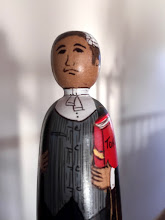Every profession has its own language. Medicine has
its archaic tongue of body parts and procedures, engineering its dialect of structure
and form. While the Law, being a discipline of ideas, relies more heavily than
most upon language.
Legalese is formal, often dated
and sometimes unfathomable – even for lawyers. Sometimes the concepts being
expressed are to blame: just ask any judge who’s had to explain self-defence
against provoked assault to a jury. Sometimes the practitioners are to blame:
especially those who seek to shroud their own ignorance in jurisprudential
gobbledygook.
It is the lingo of practitioners
labouring at the coalface of justice. Subtle, vaporous and sometimes poetic. The
language appreciated by Shakespeare, Dickens and Mortimer. The dialect once
famously captured by Peter Cook, who sharpened and hardened it and murdered
an entire audience with mirth. (Judge's summing up.)
This language can vary from
country to country, jurisdiction to jurisdiction and even courtroom to
courtroom. An expression that is accepted and understood in one court may cause
consternation and contempt proceedings in another.
The USA has its own version of
it. Although I don’t pretend to be a fluent speaker I’ve learned a term or two.
For example, ‘hammer’ has come to mean a judge, while to ‘shake’ a client is to
encourage a guilty plea.
In England the term ‘spank’ in a
lawyer’s mouth means the same as in everyday English. That is, when a barrister
says ‘My client was reluctant to take my advice, so I had to spank him’ that
really does mean what it says.
In Australia informal legal lingo
is particularly rich. A happy combination of professionalism and larrikanism.
The results are honest, irreverent and just a little lawless.
So tighten your truss, strap on
your court cosy and bat on ….
Australian Legalese: some basic concepts.
A punter
is a client.
To roll the dice is what a punter does when he pleads not guilty in
the face of an exceedingly strong prosecution case.
A punter who nods the nut is pleading guilty, often by nodding his head as he is arraigned.
A brief is both the written instructions and other documents given to
a barrister in order for her to act for a punter; as well as a term for one’s barrister.
The beak is the judge. This term is said to date back to colonial days
when judges were apparently selected as much on the length of there snouts as
because of legal knowledge, experience and temperament.
Battle jocks refer to sturdy underwear, often
dull in colour, that are worn when a barrister expects a particularly vicious
clash with opposing counsel, a feisty witness or cantankerous judge.
Later, part 2 (unsurprisingly).



No comments:
Post a Comment